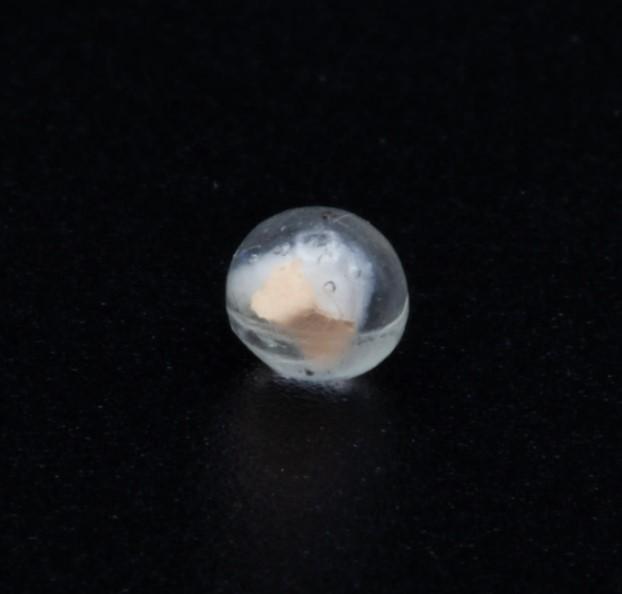Artist Statement
Tags: Bio Art, Interplanetary, Queer & Trans Futurities
The enchanting Earth is too-often made inhospitable to those marked as transgender. To survive we xenomogrify ourselves through social and biological technologies, altering our surfaces, our viscera, our molecular balances. None of us have been to space even if we possess somatic knowledges of deep bodily transformations, necessary experiences for extraterrestrial environments.
TX-1 launches bits of the artist’s hormone replacement medications, marking the first-known time that elements of the transgender experience orbit the earth. TX-1 includes a fragment of my spironolactone pill, a slice of my estradiol patch, and a miniature handmade paper sculpture, included to gesture towards the absent-yet-present xenoentities of the cosmos. A symbolic exodus to an orbit high above, the eventual return of TX-1 to Earth is also a sign of resilience, of not being disposed, of coming back to thrive once again. TX-1 Video

- Adriana Knouf (she/her/hers, sie/hir/hirs) works as a xenologist, as an artist-scientist-writer-designer-engineer. She engages with topics such as space art, satellites, radio transmission, non-human encounters, drone flight, queer and trans futurities, machine learning, the voice, and papermaking. She is the Founding Facilitator of the tranxxeno lab (https://tranxxenolab.net), a nomadic artistic research laboratory that promotes entanglements amongst entities trans and xeno. Adriana is also an Assistant Professor of Art + Design at Northeastern University, Boston, MA, USA. She is the author of How Noise Matters to Finance (2016) and numerous other journal articles, book chapters, and conference papers. She exhibits and presents her work internationally in festivals, conferences, and galleries. Adriana has a PhD in Information Science from Cornell University, an SM in Media Arts and Sciences from the Massachusetts Institute of Technology, and a BS in Engineering and Applied Science from the California Institute of Technology.
This project was the result of a ThoughtWorks Arts Residency, and was sponsored by the Consortium for Research & Robotics at Pratt Institute, and supported by Reach Robotics, Great Britain.